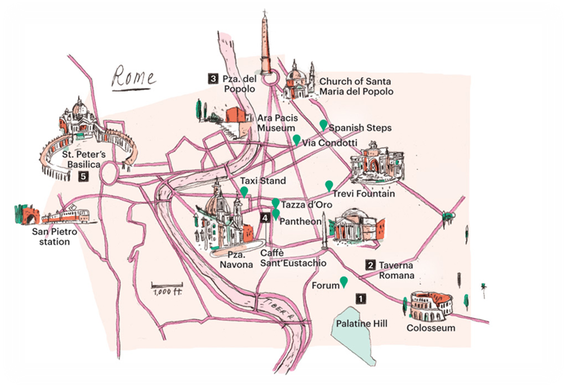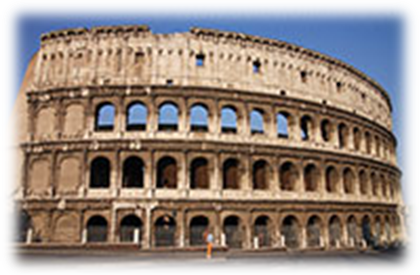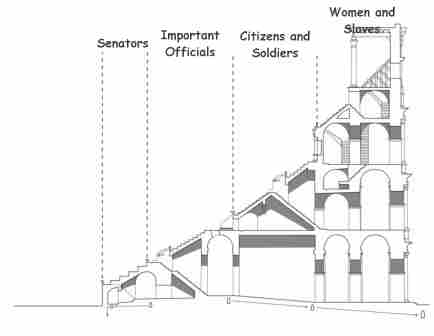
When in Rome, you will be charmed by the peace and serenity of the Eternal City with the seven hills and the bright silent moon that illuminates its graceful statues. One such eye-capturing beauty of Italy is the Colosseum of Rome. An iconic symbol of Imperial Rome, it is considered as one of the finest and greatest works of Roman architecture and engineering. Various games were played in the Colosseum and were free to the Ancient Romans. The people who visited then were provided complimentary food and this system had a famous saying, ‘free bread and circus to the people of Rome’. The Colosseum had about 80 entrances and it could accommodate approximately 50,000 spectators. The games and festivals held at the Colosseum could last for about 100 days and it is estimated that it had taken lives of about 5,00,000 people and over a million of wild animals. The Colosseum was originally known as Flavian Amphitheatre and was built by Emperor Vespasian. It was used for gladiatorial contests and public spectacles such as animal hunts, re-enactments of famous battles, executions and dramas and is one of the modern Wonders of the World.
The Roman Colosseum is located just to the east of the Roman Forum. It is situated in the heart of piazza Del Colosseo on the ‘B’metro line. Linea B is an Italian name for the subway station – the Colosseo Metro Station.

Covering a total land of about 6 acres, the elliptical building measures about 189 meters in length, 156 meters in breadth and 48 meters in height. It extends a base area of about 24,000 sq. m. The structure was magnificently clad in marble and it had approximately four stories above ground. About 160 graceful statues were arched on the upper floors. More than 1.1 million tons of concrete, stone and bricks were required to complete the construction of the Colosseum. However, according to the historical evidences, 200 bullock carts were used to transport marbles to the construction site. The upper storey was meant for the seating of the lower classes and women.

It was Emperor Vespasian, founder of the Flavian Dynasty, who decided to construct the Colosseum for his successor Titus. The construction began in around 70 A.D. to 72 A.D. and it was funded by the spoils of the Jewish Temple after the Siege of Jerusalem. However, after the devastation of the Great Fire of Rome in 64 A.D, the then Emperor Nero seized much of the land and built a grand Domus Aurea and created an artificial lake that surrounded the pavilions, gardens and porticoes. Also, at the entrance of the Aurea was built a gigantic bronze ‘Colossus of Nero’. In order to dissociate himself from the hated tyrant Nero, Emperor Vespasian ordered the Colosseum to be built on the site of the Nero’s Palace. His aim was to gain momentum and popularity by staging deadly combats of gladiators and fights of the wild animals for the Romans. It had taken about eight years to finish the construction of the Colosseum in the year 80 A.D. Titus, the Emperor held 100 straight days of games in celebration of the same; this was a stretch where 5000 people and wild animals were slaughtered. In 847, the southern side of the Colosseum collapsed due to a devastating earthquake.

Seating arrangements were made according to the Roman law and were decided on the parameters of rank and class. The Senators reserved the best seats. Behind them were the ranking government officials. A bit higher were the seats for the ordinary Roman citizens, especially men and the soldiers. At the top of the stadium sat the slaves and the women. The Emperor Box was a seat where the Emperor used to sit, as he was the one who paid for the games. There was an underground passage called hypogeum. It was used for the animals, actors and gladiators to appear at the middle of the arena. The dead gladiators were taken out from the West Exit and hence the West Exit was known as the ‘Gate of Death’.

The important features of the Colosseum are:
-
The marble facade of the Colosseum were so unique that it was used for the construction of St. Peter’s Basilica and other later monuments.
-
With contests involving 11,000 animals and about 10,000 gladiators within 123 days, Emperor Trajan celebrated his victories in Dacia in 107 CE.
-
Due to the high cost of procuring animals and expensive maintenance of the gladiators, the last gladiatorial fights occurred in 435 CE and the last animal hunts stopped in 523 CE.
-
About 1,00,000 cubic meters of travertine stone were used for the outer wall of the Colosseum which was held together by 300 tons of iron clamps.
-
Some of the famous singers who performed at the Colosseum were Elton John, Billy Joel, Paul McCartney and Ray Charles.


